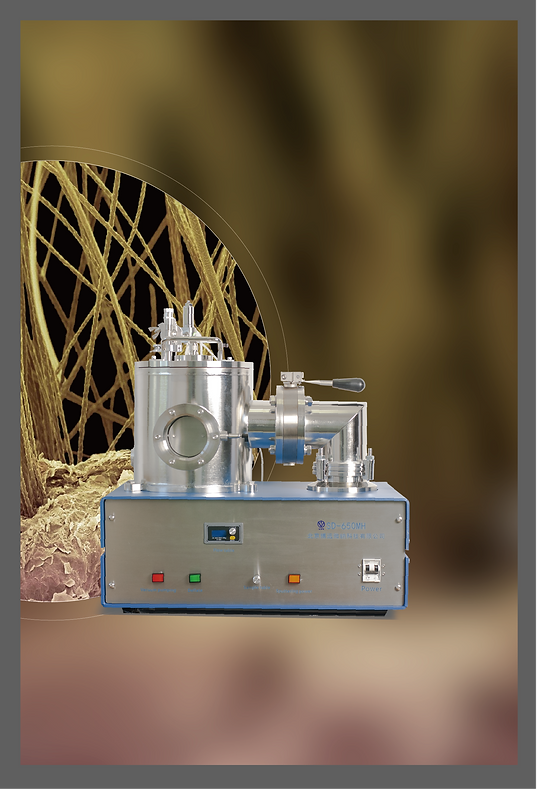Толщина Однородность осаждения
Введение
Покрытия с магнетронным напылением широко применяются при осаждении на больших площадях, и большое внимание уделяется однородности толщины тонкой пленки, коэффициенту осаждения, коэффициенту использования целевого материала и другим проблемам в лакокрасочной промышленности.
Будь то покрытие полупроводникового чипа защитной тонкой пленкой или нанесение антибликового покрытия на линзу очков, инженеры-технологи должны добиться определенных характеристик толщины, чтобы соответствовать требованиям производительности. Равномерность толщины не менее важна, чем сама толщина пленки.

Факторы, определяющие производительность осаждения
Осаждение, процесс, используемый для нанесения тонких слоев материала (или пленки) на подложку, является обычной практикой в таких отраслях, как полупроводники и нанотехнологии. Осаждение тонких пленок может быть достигнуто с помощью различных технологий, позволяющих получать пленки от изоляторов до полупроводников и металлов. Пленки могут выполнять одинаково разнообразные роли, начиная от межслойных диэлектриков и заканчивая межсоединениями.

Гибкость
Гибкость, диапазон возможностей, которыми обладает система, может быть важным фактором при принятии решения о том, какой тип системы осаждения следует приобрести. Это в большей степени относится к средам исследований и разработок, а не к промышленным приложениям, где часто предпочтение отдается конкретным решениям. Понимание материалов, которые можно осаждать, размеры подложки, диапазоны температур, ионный поток, скорость осаждения, частоты, конечная точка и режим работы под давлением — это лишь некоторые из соображений. Гибкость также является системным качеством, позволяющим планировать будущее. Приоритеты НИОКР меняются, и полезно иметь систему, которая может справиться с этими изменениями. Над этими соображениями стоит бюджет. В зависимости от типа опций технологии цены на системы могут значительно различаться.
Отчет об испытаниях модели устройства для нанесения покрытия VPI:СД-900М
Левая сторона изображения
Results & Conclusions
Shows the result of the X-ray diffraction of the Ga2O3 films growth with various O2 flow rates. The diffraction peaks located at 29.7°, 37.6°, and 58.4° originate from the 400, 402, and 603 of the β-Ga2O3, respectively. For the sample without the O2 flow rate, 400, 402, and 603 of the β-Ga2O3 diffraction peak coexisted; this suggests that the sample was polycrystalline. With the O2 flow rate increased from 0 to 4 sccm, the diffraction peak intensity of the 400 β-Ga2O3 decreased, while the intensity of both the 402 and 603 of β-Ga2O3 diffraction peak increased. Both of these two diffractions belong to the 201 plane family of the monoclinic Ga2O3. The above result illustrates that highly 201-textured β-Ga2O3 samples have been prepared and the orientation of crystal is gradually enhanced when oxygen flow increased. Furthermore, the full width at half maximum (FWHM) values of the 402 β-Ga2O3 peaks are 1.00°, 1.10°, 1.06°, and 0.96° for samples with the O2 flow rate increased from 0 to 4 sccm, respectively. The FWHM value is dependent on the O2 flow rate, and the results suggest a higher O2 flow rate results in improved crystal quality. The minimal FWHM is obtained at 4 sccm of the O2 flow rate, which means the grain size is the largest. The combined results of the XRD peak intensity and the FWHM value of the samples show that higher O2 flow rates lead to better quality.
In summary, in terms of the effect of oxygen flow on the structure, optical l properties of the Ga2O3 films have been investigated by XRD, EDX, AFM, transmission spectra, and PL spectra. With the increase in the oxygen flow rate, both the crystal quality and luminescence intensity of the sample first decreased and then enhanced. All these observations suggested that the reduction in the oxygen defect density is responsible for the improvement in the crystal quality and emission intensity of the material, however, there have been no reports about O2 flow rate on the properties of the Ga2O3 growth by RF magnetron sputtering. Our results were similar to those obtained by other techniques and the specific control of various experimental operating parameters. Vu found that the performance of β-Ga2O3-based photodetectors with a higher oxygen partial are better than those prepared at lower oxygen pressures. Wang et al. studied the influence of oxygen flow ratio on the performance of Sn-doped Ga2O3 films by RF magnetron sputtering; they found the sample with higher oxygen flow ratio displays an enhanced performance. Shen’s study revealed oxygen annealing will enhance the performance of β-Ga2O3 solar-blind photodetectors grown by ion-cutting process. Our results demonstrated that high-quality gallium oxide materials can be obtained by adjusting the oxygen flow rate.